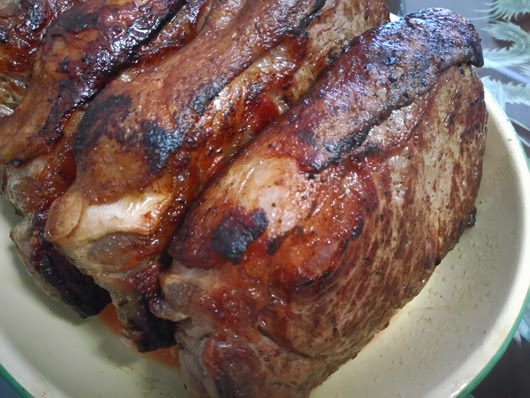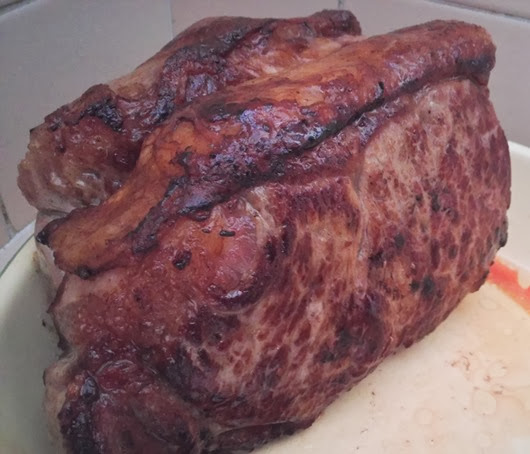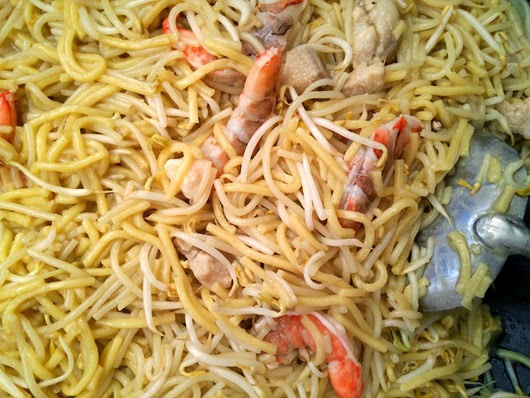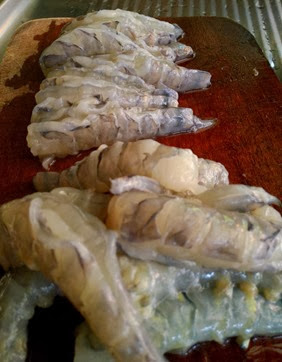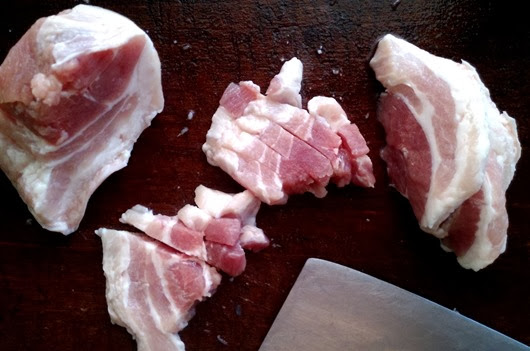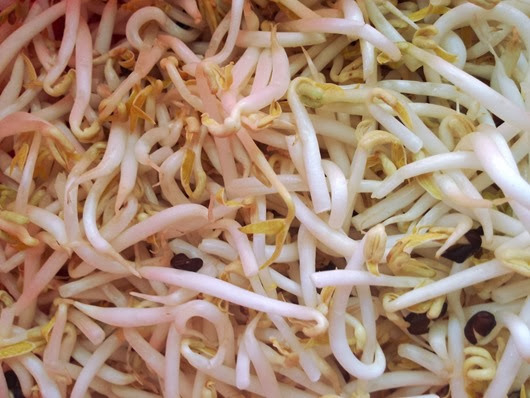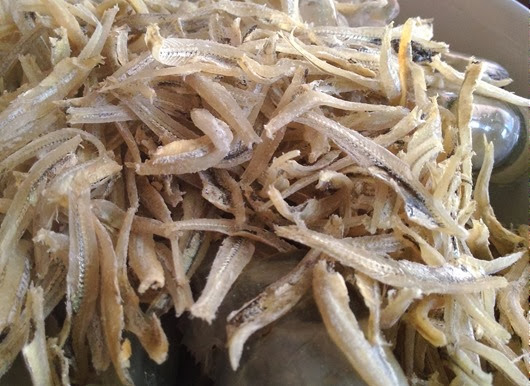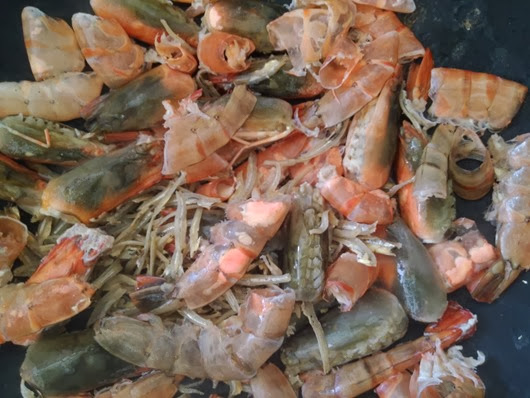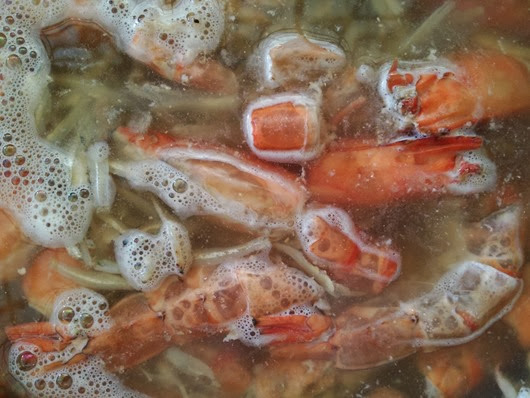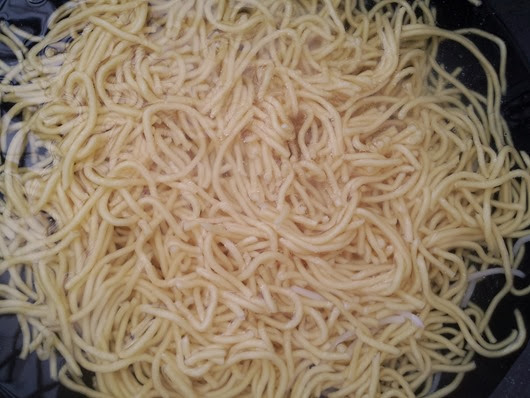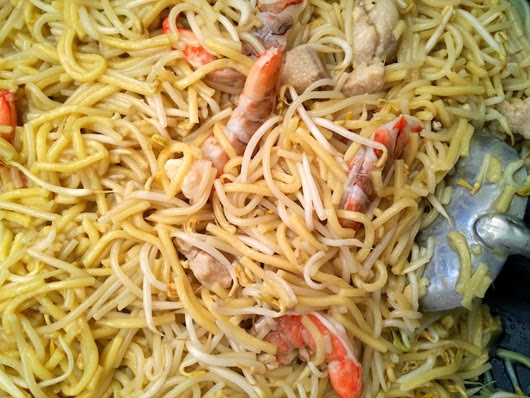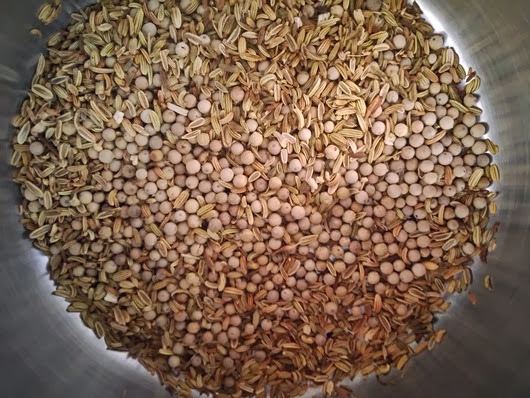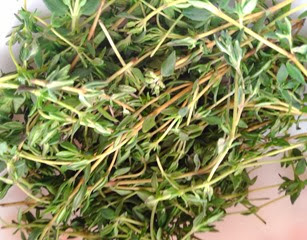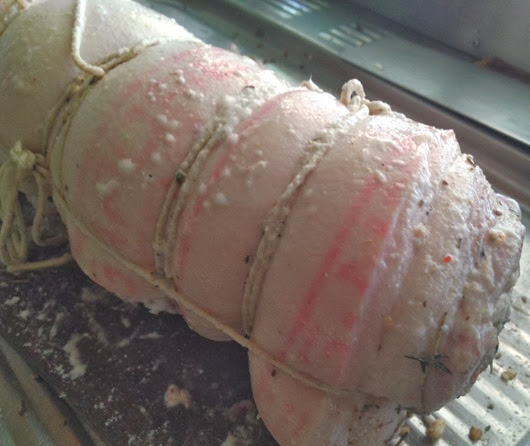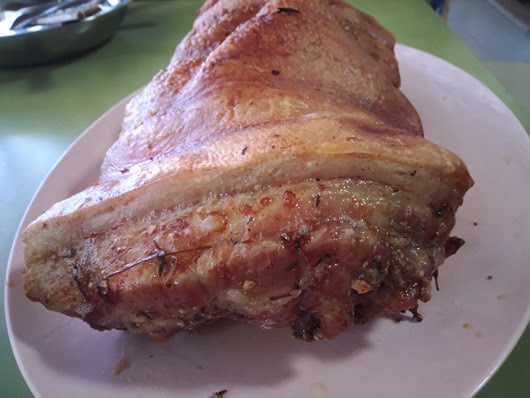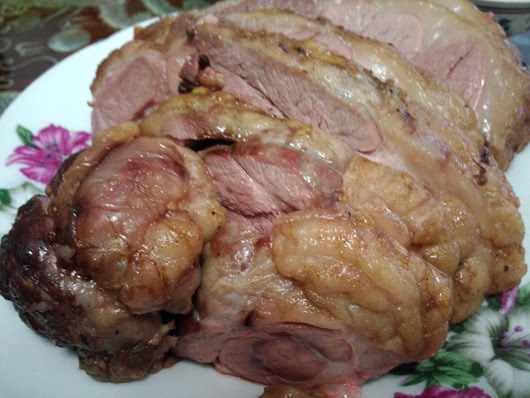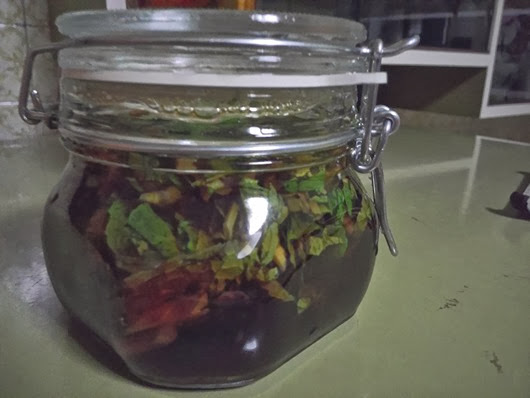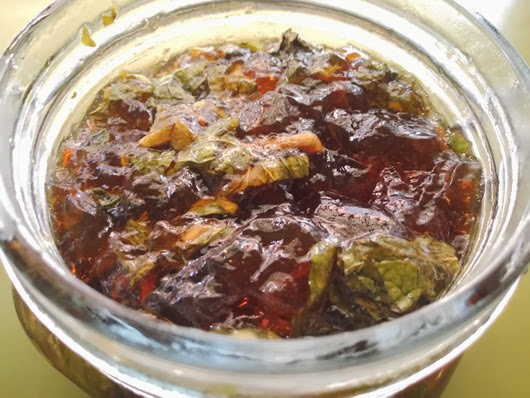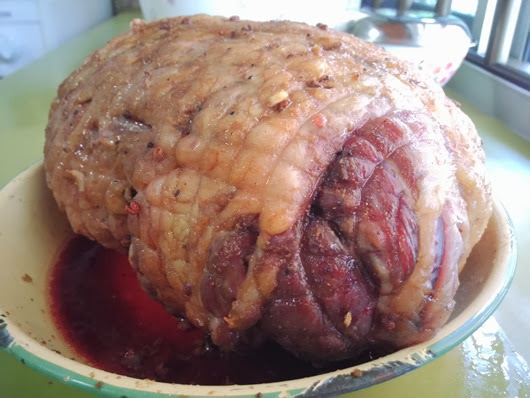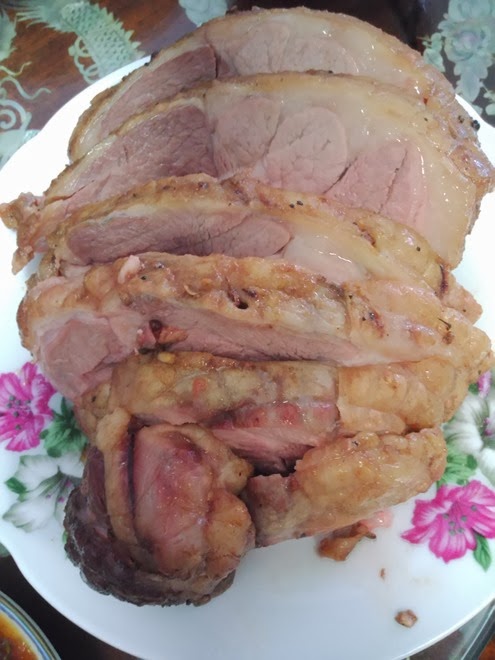Oct 11, 2014
Jun 28, 2014
Exercise: High Intensity Interval Training (HIIT)
This is High Intensity Interval Training (or another fancy way of saying Pylometrics). Y'know, jumping like a monkey or lifting stuff in a short time. Anyways, it works. I feel great and I'm looking for ways to make it a helluva interesting -- albeit painful -- exercise.
So I've been experimenting and have found these 3 routines that made me wanna puke without killing my knee and back.
Each routine set consists of 4 exercises. Do each exercise within 30 sec, with a rest time of 60 sec at the end of the set. Do 10 sets if possible. If not, do at least 6 sets and work your way up to 10.
Routine 1
- 10 X Burpees & Hops
- 10 X Clap Push Ups
- 5m Bear Crawl
- 10 X Kettlebell swing (20kg)
Routine 2
- 10 X Burpees & Hops
- 10 X Clap Push Ups
- 10 X Wide Pull ups (reduce by 1 for every succeeding set. E.g. set 2: 9 X pull ups)
- 1 X Full court fast break (or sprint 50m thereabouts)
Routine 3
- 5 X Twisting Lunges (20kg)
- 10 X Kettlebell 1-arm swings (20kg)
- 5m Lizard Crawl
- 15 X Duck & Hook (Bagwork: Jab & Cross is OK)
Mar 2, 2014
Food Experiment #8: Beef Steak
So… beef again. This time my dad bought 2kg worth of steaks. Each one’s easily 2 inches thick and 500 grams heavy.
Massive lah.
Since it’s been sitting in the freezer for 1 week, I thought I’d give the steaks a go and pan fry them into caramel town.
You’ll Need These Ingredients
- Beef Steak (what else!)
- Salt
Instructions and “Did it Work?”
1. Prepping the Steak
Take out of freezer. Thaw. Sprinkle salt. Leave to dry and drain.
2. Making the Steak
I like to sear the outside then turn down the heat to cook the steaks. I do this 2 steaks at a time, because I don’t have all that much space on my wok. For a 2-inch steak, I’d budget 2 mins for each side.
The process goes like:
- Heat the wok on High heat.
- Put the steaks fat-side down onto the wok. Do not add oil. The oils will be drawn out onto the wok as the fat cooks. (2 min)
- Flip the steaks onto 1 side. Let it sizzle (2 min)
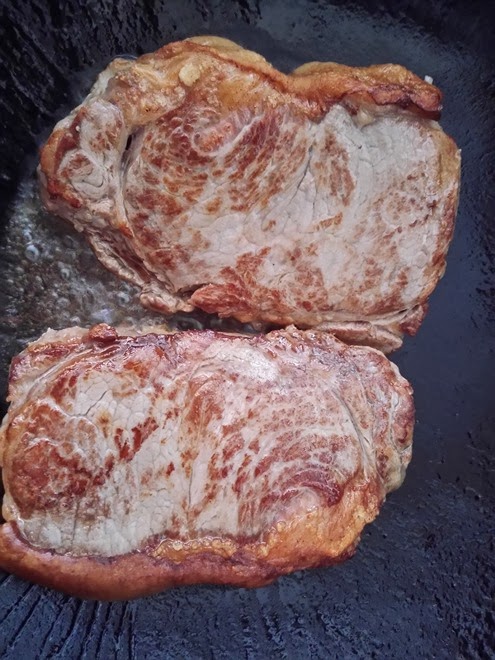
- Flip it over to the other side. Let it sizzle for another 2 min.
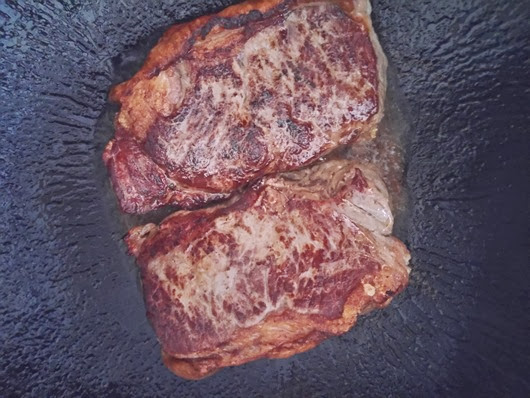
- Flip the steaks over again. Turn down the heat to medium. Let it cook for 2 min. Do the same for the other side.
I like my steaks medium rare to rare. As a rule of thumb, I compare the steak against the muscle under my thumb… like so in the infographic below:
Source: Lifehacker
Once cooked to your liking, leave the steaks aside for 3 to 5 min before eating.
Verdict
This works!
Feb 23, 2014
Exercise: Pulls up & Pylometric Pull ups
I love pulls ups. I hated them during the army. But as with most things, the more you do, the better you get, the more you prefer it.
 (Source: Well Built Style)
(Source: Well Built Style)
Anyways, the pull up – simple as it is – works the upper back like no other exercise. I’d actually recommend doing pull ups over Lat Pull Downs or other upper back exercises.
If you are incorporating pull ups into your routine, go beyond the standard wide-grip pull up and incorporate things like L-pull ups, Commando pull-ups or, my current favourite, pylometric close-to-wide-grip pull ups.
The Routine:
- 4 X 10 Pylometric Pull Ups
- 2 X Suicide Drills
- 1 X 10 Hang Cleans
- 1 X 10 Shoulder Presses
Exercise of the day: Close to Wide Grip Pylometric Pull Ups
Go to 3.02 mark to see examples of it.
More good pull up variations at Boulter Training
Feb 2, 2014
Food Experiment #7: Fried Hokkien Prawn Mee
I’m sick of roasting stuff. Hence this Food Experiment. The Hokkien Prawn Mee.
This dish is a staple in Singapore’s Hawker Centres and, if done well, it should taste of prawns infused into the thick yellow and white noodles. So much so that it should be gravy-slurping good.
As with all food experiments, this is my first time making it. It wasn’t too bad, but lacked bite – more in the verdict.
I found the original recipe from My Wok Life
You’ll Need These Ingredients:
For the Stock
- Prawns, lots of prawns
- Ikan Billis
For the Dish
- 250g of yellow noodles
- 250g of white bee hoon
- Prawns, lots of prawns
- Beansprouts, lots of it ‘cause I love vegetables
- 150g of pork belly
- 2 eggs, beaten
For the Flavouring
- 2 garlic cloves
- 4 tablespoons Thai fish sauce
- Pinch of salt
- 1 tablespoon of sesame oil
- 1 tablespoon of light soy sauce
- 120ml of oil
Instructions and “Did it Work?”
1. Prepping the Foods
Shell and devein the prawns. Keep the shells for making stock.
Tip: I usually start working on them once they’re out of the freezer. If you’re not masochistic, thaw them out first before decapitation and shelling.
Cut up the pork belly into thin columns. Firstly, cut the pork belly into slices, then cut them up into small long columns.
My Wok Life (see link above) details how to make Pork Lard. But I gave it a miss.
Wash the beansprouts and Ikan Billis. Pick out the blackheads from the bean sprouts.
2. Making the Stock
Heat up the wok with a big fire. Make sure that it’s hot before starting.
Dry fry the prawns and Ikan Billis until they’re a little charred. Once it releases the smells – and you’ll know it – add water until it covers the mix.
Bring it to a boil and turn down the heat to low. Leave it for 30 min to leech umaminess out of the prawns. Keep an eye on the stock so that it doesn’t dry out. Add more water or reduce the fire.
Strain and transfer to a pot or massive bowl.
3. Cooking the Noodles
Yellow noodles are incredibly oily and alkaline tasting. Blanch very quickly (10 sec) in hot water and leave aside to make it lighter.
Heat up the wok on medium heat. Add oil and wait for it to bubble.
Add garlic and stir fry until fragrant. Add pork belly slices. Midway through – just when the pork belly starts to cook – add sesame oil and soy sauce for fragrance and wankfull sizzle.
Stir fry like you’ve “gone madder than a bastard on Father’s Day” (src: Transmetropolitan).
Add the noodles. Loosen up the noodles, then add the stock.
* Now I’ve added too much stock for this Food Experiment. Instead of covering the noodles with stock, just add until it’s halfway full.
Cover the wok and let it simmer on low fire. Every now and then, uncover and flip the noodles around so that the bottom doesn’t stick.
We want the noodles to soak up as much of the prawn stock as possible. This should take about 5 minutes.
Once done – the stock should be a thick gravy now – turn up the heat to high, add the prawns and bean sprouts. Stir fry until cooked (3 minutes), then add the eggs.
Two schools of thought about eggs:
- Some say to add and fry immediately
- Some say to make a space on the wok, fry the eggs and once it’s a little cooked, incorporate it into the noodles.
I used the former approach for this Food Experiment. But hey, it’s your call.
Once done, plate and serve. The Hokkien Mee should be draped in prawn stock gravy. If not, you’ve overcooked it.
Verdict
Making foods over a naked fire is quite different from roasting. It boils down – and not being pun-ny here – to control of the fire itself. The noodles were mushy and full of prawny goodness.
But it’s not like the Hokkien Mee served in Hawker Centres.
The next effort will include:
- Braise the noodles with half of the stock
- Cook the eggs before incorporating it into the noodles
I guess it should work better that way then.
Jan 27, 2014
Senoko Fishery Port & Fish to Scale & Gut
We wandered over to Senoko Fishery Port one fine midnight to buy seafood – flash-frozen fish, big ol’ prawns and slimy squid.
The haul was for Chinese New Year (the Chinese version of Christmas without religious undertones & oversights) where food, food and gut-bursting food is the norm.

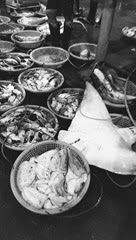
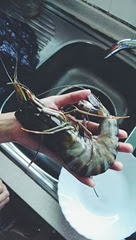
Source: Facebook Friends (like I’ll tell you)
My Haul: 1 kg of Tiger prawns, 1 small parrot fish
What I wanted to get out of it wasn’t just relatively fresh and relatively cheaper seafood. I wanted to scale, gut and prepare a fish from scratch.
Preparing a Fish
Simple 3-step process: scale, gut, and keep.
Images taken from the web.
Scale the Fish

Get a fish scale scrapper and run it against the scales to pull them off the fish. Do it all over the fish – head, tail, body, everywhere. You’ll know when it’s done when the fish is smooth all over to touch.
This is the messiest step. I do it outdoors now especially after I clogged up the sink with fish scales.
Gut the Fish

Not for the squeamish. It gets bloody here. I’ve outlined the steps below:
- Remove the gills
Lift the side flaps on the fish’s head, grab a hold of the gills and yank them out. - Slit the fish along the belly
Use a short and sharp knife. Cutting through the skin and belly requires effort. Place your hand above the fish, press down on it, and commence slicing. Make sure that your fingers are nowhere near the cutting zone. - Open up the fish and pull out its guts
Basically reach in and pull out the intestines, liver, ballast pouch etc. I use pliers as it can get slippery. Essentially you’d want a clean, hollowed out fish. - Scrape out the blood residue
Use a knife or point of a chopper to scrape out the now clotting blood. This helps to reduce the fishy smell and taste. Clean throughly with water.
Keep the Fish
If you’re not using the fish now, sprinkle a little salt inside and outside of the fish, and freeze it.
Now that’s how we scale, gut, and clean a fish.
Jan 20, 2014
Food Experiment #6: Porchetta (aka Roast Pork Belly)
Zedy and I saw images of Porchetta (like the one below), and we couldn’t get it out of our heads or bellies, for the matter.

Source: Iamafoodblog
As true foodies, we thought: “Let’s make one Porchetta and eat one Porchetta.” Off we went searching for recipes and decided on this really nice step-by-step recipe from Kenji of Serious Eats.
It turned out pretty OK. And we finished it all… At least I think my dinner guests weren’t humouring me.
You’ll Need These Ingredients:
- 2 kg of pork belly (remove the hairs on the skin and wash the entire belly in salt water)
For the Marinade
- 3 tablespoon of peppercorns (it don’t matter if they’re white or black)
- 5 tablespoon of fennel seeds
- 7 chillies
- 10 garlic cloves, minced
- 1 handful of thyme
- Lots of sea salt
- 1 tablespoon of baking soda
Instructions and “Did it Work?”
1. Make the Marinade
Toast the peppercorns and fennel seeds. Once it turns brown and smells toasty, chuck the lot into a blender (or mortar and pestle) and grind them up into powder.
Mince up garlic, chilli and thyme.
Put the minced garlic, chilli, thyme and peppercorn-fennel seed powder on separate plates.
2. Preparing the Roast
Put the pork belly skin-side up.
Stab into it with a sharp knife or scissors. This helps to make the skin crispy – at least that’s what my dad says and that’s what the roast meats guy says too. It’s not easy and it feels like I’m stabbing into rubber.
Once done, flip the belly so it’s meat-side up.
Now slice into the meat in diagonal lines, rotate it, then slice it again in diagonal lines so that you get diamond-shaped cuts on the meat. Try as much as possible to cut into the meat until it reaches the fat.
Now the meat’s prepped.
3. Marinade the Roast
All the chilli, garlic, thyme and peppercorn-fennel mix that was ground up earlier now comes in play. Don’t go lightly on the seasoning, I find that heavily-seasoned meats tend to get better taste results.
Keeping the pork belly meat-side up, we scatter and rub the spices into the meat and the grooves in this order:
- Lots of salt
- Garlic
- Chilli
- Peppercorn-fennel mix
- Thyme
The end result looks like a run-over chia pet.
Once happy with chia-ing the meat, roll up the pork belly.
I tie up the belly in the middle, then tie up the sides at regular intervals. I like to keep rolls contained within itself, but slicing the meat means that some of the pork loin will spill out on the ends. To rectify it, I tied up the meat lengthwise too.
Final step before the refrigeration, mix 2 tablespoons of salt with the baking soda and rub it liberally onto the pork roll. Wrap the roll with clingwrap and leave it in the fridge overnight.
4. Roast it!
Take out the rolled pork belly. Leave it on the table for 1 hour to let it come to room temperature first.
I chucked it into the oven for 160C at 3 hours to slow cook the insides. Watching it spin around and around in the oven is mesmerising. At this point in time, the pork belly looks and feels hard but spongy to touch.
Once the bell goes “DING!”, crank up the heat to 250C for 30 min to cackle the skin and give it a brown all-over colour.
After roasting, take it out and sit it for 10 min under an aluminium foil tent.
Once 10 min has gone by, start carving the roast into thick, stuff-your-face-in slices. The trick here isn’t to cut from the top (aka the skin) as it’ll break off into shards of cackling. What I did was to flip it so that it faces meat-side up and cleave it into slices.
This keeps the skin intact like the picture below.
Verdict
I’m glad that I experimented with the Roast Pork Belly on a smaller scale before this big-ass roll. I shouldn’t have removed the strings before the final roast cackling. That’s why this Porchetta looks flatter than the usual rolled up version.
Otherwise, succcess!
Jan 9, 2014
Sleep Deprivation Screws You Over… No Shit (Or I Look Like a Panda!!!)
This explanatory infographic from Huffington Post shows what happens if you don’t get enough sleep.
Scary stuff. That’s why I’m sticking to my 8 hours and screw-you-whoever-gets-in-my-way!

Source: Huffington Post
Jan 3, 2014
Food Experiment #5: Si Beh Slow Roast Lamb & Mint Jelly
My dad bought a massive leg of lamb to roast. So why not a freakin’ slow roast lamb for New Year’s Dinner. Buoyed by my earlier success with lamb, I decided to keep it simple and cook it for 8 hours as directed by Andew McConnell (src: Gourmet Traveller).
Oddly enough, it’s not as tender as the earlier recipe…but I’m getting ahead of myself. Onwards foodie folks!
You’ll Need These Ingredients:
- 1 leg of lamb, 4 lbs. (I used boneless), tied
- 1 teaspoon Sichuan peppercorns
- 1 teaspoon cumin seeds (I used cumin powder)
- 2 garlic cloves, crushed
- 2 teaspoon sea salt
For the Mint Jelly
- 1 cup sugar
- 1½ cups firmly packed mint leaves
- 1 cup white vinegar
- ¾ cup water
- 2 tablespoons gelatine, dissolved in ¼ cup water
- ½ cup chopped mint leaves, extra
Instructions and “Did it Work?”
1. Make the Spice Rub
Do I really have to go through this?… Alright, crack the peppercorns and toss it with the cumin, garlic and salt.
Tada.
2. Marinade the Roast
Stab into the lamb. I mean it. Stab deep and long into the trussed up lamb leg. Stab it like you got a vendetta to spare. Because you’re supposed to rub the tossed-up spice mix onto the lamb and into those nice clean holes.
Done with stabbing and rubbing?
Cover and leave in the fridge overnight.
3. Make the Mint Jelly
In a medium saucepan, combine sugar, mint leaves, vinegar and water. Bring to boil on high, stirring until sugar dissolves. Reduce heat. Simmer for 10 minutes. Stir dissolved gelatine through. Strain, discarding mint leaves. Pour hot mixture into sterilised jars.
Allow to cool until thickening, stir extra fresh chopped mint through.
Seal well. Chill until required. (src: NineMSN)
4. Roast it!
My reference recipe calls for roasting covered with foil for 2 hours in the oven at 160C. Reduce to 100C and roast for another 5 hours. Remove the foil and roast for 1 hour at 100C.
That’s a total of 8 hours!
After roasting, take it out and give it 10 min of sitting time under an aluminium tent.
Once 10 min has gone by, start carving the roast into thick, stuff-your-face-in slices.
Verdict
Not as tender as my previous food experiment Mechoui Lamb and lacking the spiced flavour, but it’s bursting with muttonly goodness and crust of fat made it worthwhile.
Went surprisingly well with the tart Mint Jelly. I think I’ll slow roast it without the foil next time.
Almost success!


